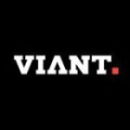In 2010, a Bay Area organization called Founders Den opened its doors, offering a private club and shared office space to promising startups and investors — with high expectations for growth. One of the 12 startups in that original cohort was Docker, the company that now features an open source project that automates code deployment inside software containers.
Today, Docker works like this: while each software container is isolated from others — bundling its own library, software and configuration files — these containers can communicate with each other and also share a single operating service kernel, which uses fewer resources than virtual machines.
Since leaving Founders Den, Docker has seen an explosion of growth in the tech industry, reaching unicorn status in 2015 following a $95 million Series D. The following year, it was reported that In-Q-Tel, the investment arm of the CIA, was a large investor. In a recent report, Docker claimed to have witnessed 37 billion containerization applications downloaded, and 3.5 million applications placed in containers using their technology.
What makes Docker so useful to so many tech companies? We sat down with Glenn Bailey of LA’s Viant to learn more about the importance of this technology, and why it’s more efficient than anything else on the market.

Glenn Bailey is the director of site reliability engineering at Viant, a platform that helps automate the planning, buying and measurement of advertising campaigns. Not only is Docker fully ingrained into its tech stack, but it received high praise for simplifying the lifecycles of deployments.
Tell us a bit about how Docker fits into your tech stack and how you leverage it in your work.
Docker is 100 percent ingrained into our current tech stack and has been for a couple of years now. Artifacts are built with CI/CD tools, containerized using Docker and then pushed to private registries. Once pushed, developers and engineers can then pull the image down locally for testing or deploy to our various development and staging environments. For running Docker containers in production, we use a mix of Kubernetes and instances running Docker Compose in Amazon EC2 Auto Scaling groups.
Docker is 100 percent ingrained into our current tech stack and has been for a couple of years now.”
What is your number one favorite thing about Docker, and why?
Our number one favorite thing about Docker is the removal of dependency management across our deployments. The “legacy” way to deploy was to use a configuration management tool to maintain consistency on all instances and servers before deploying the artifact. This involved verifying that specific versions of libraries and binaries were in place. With Docker, the only thing needed on the instance or server is Docker. Then the artifact is a Docker container, which for us has greatly simplified the lifecycle of a deployment.
Inside the Tech: What Viant’s Engineers Use
- MySQL (databases)
- BigQuery (databases)
- AngularJS (frameworks)
- Golang (languages)
- Java (languages)
- JavaScript (languages)
- Python (languages)
- SQL (languages)









